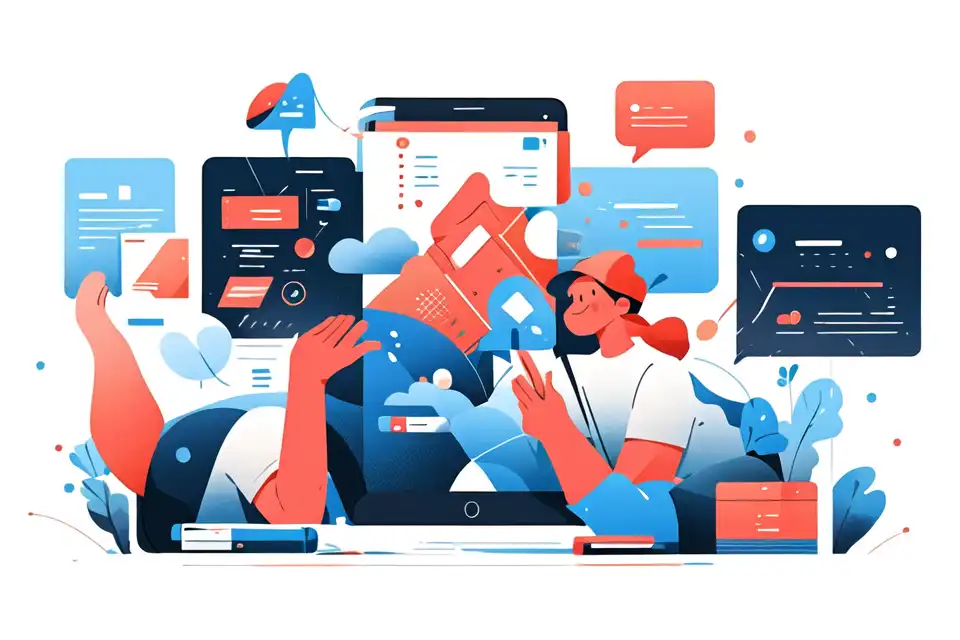Inclusive Language
Understand what Inclusive language means in Gen Z context with the comprehensive Lark glossary guide. Explore essential terms and how Lark is loved by Gen Z workers.
Try Lark for Free
Leverage the all-in-one capabilities of Lark to engage with Gen Z workers.
What does inclusive language mean when your gen z staff say it?
Inclusive language, in the Gen Z workplace context, refers to the use of words and phrases that promote inclusivity, diversity, and equality. It involves using language that is respectful, sensitive, and inclusive of people from different backgrounds, cultures, genders, and identities. When Gen Z staff members discuss inclusive language, they are referring to the importance of using words and expressions that do not exclude or marginalize individuals or perpetuate stereotypes.
The origin of inclusive language
The concept of inclusive language has its roots in the broader movements for social justice and equality. It emerged as a response to the recognition of the power dynamics and exclusionary language that exists in society. Inclusive language aims to challenge and dismantle these oppressive structures by promoting language that is more inclusive, respectful, and affirming.
Over the years, inclusive language has gained popularity among Gen Z due to their strong values of equality, social justice, and inclusivity. Gen Z has grown up in a more diverse and interconnected world, and they are more aware of the impact of language on individuals and communities. They have also been exposed to discussions and debates on social media platforms, which have further fueled their interest in using inclusive language.
The alternative ways of saying it
Before the emergence of inclusive language as a concept, there were alternative ways of expressing similar ideas. People would use terms such as "politically correct language" or "respectful language" to refer to the same concept. However, these terms did not capture the nuances and depth of inclusivity that inclusive language encompasses.
For Gen Z, some alternative expressions that are understandable include "language that respects everyone," "inclusive speech," or "words that promote equality." These phrases convey the idea that language should be mindful of different identities and avoid perpetuating stereotypes or exclusionary behavior.
Learn why Lark is the next-gen collaboration tool built for Gen Z users, as well as young and fast-growing companies.
Workplace examples of gen z saying inclusive language
Example 1
Example 1
During a team meeting, a Gen Z employee might say, "Let's make sure our language is inclusive when discussing the new project. Instead of using gendered pronouns, we can use gender-neutral language to be more inclusive of all team members."
Example 2
Example 2
In a workplace training session, a Gen Z staff member might suggest, "We should incorporate inclusive language in our company policies and documents. This means using gender-neutral terms and avoiding language that assumes a specific gender or identity."
Example 3
Example 3
When giving feedback on a presentation, a Gen Z employee might say, "Your presentation was great, but I think we can make it more inclusive. Let's avoid using ableist language and use terms that are respectful and considerate of people with disabilities."
Related terms and concepts to inclusive language in gen z context
Related Term or Concept 1
Gender-inclusive language: This refers to the use of language that does not assume or exclude any specific gender. It involves using gender-neutral terms and avoiding gender stereotypes in communication.
Related Term or Concept 2
Cultural sensitivity: This concept emphasizes the importance of being aware and respectful of different cultures, traditions, and backgrounds. It involves using language that acknowledges and appreciates the diversity of cultural experiences and avoids cultural appropriation or stereotypes.
Related Term or Concept 3
Intersectionality: This term refers to the interconnected nature of social categorizations, such as race, gender, sexuality, and class, and how they overlap and intersect. Inclusive language takes into account these intersecting identities and aims to create an inclusive environment for individuals with diverse experiences.
Learn why Lark is the next-gen collaboration tool built for Gen Z users, as well as young and fast-growing companies.
Conclusion
Inclusive language is a vital aspect of the Gen Z workplace, reflecting their values of equality, respect, and inclusivity. It promotes a more inclusive and welcoming environment for all employees, regardless of their backgrounds or identities. To create a workplace that values diversity and fosters a sense of belonging, it is essential to embrace and implement inclusive language practices. This can be achieved through ongoing education, awareness, and the adoption of inclusive language policies.
By prioritizing inclusive language, organizations can foster a more inclusive and supportive workplace culture that celebrates diversity and promotes equality.
Leverage the all-in-one capabilities of Lark to engage with Gen Z workers.








